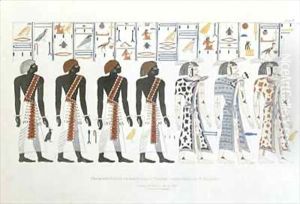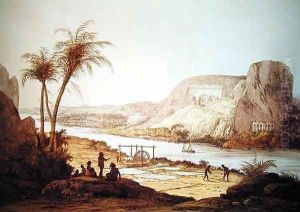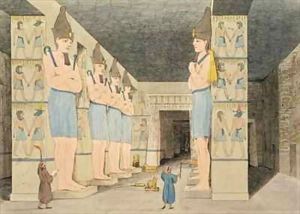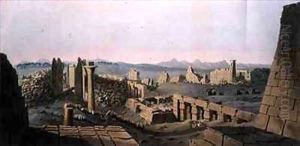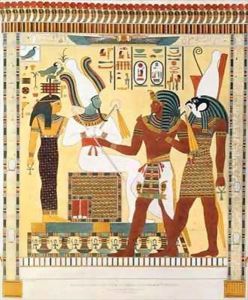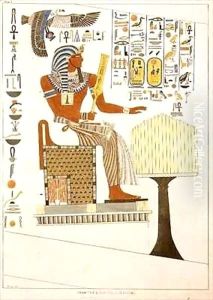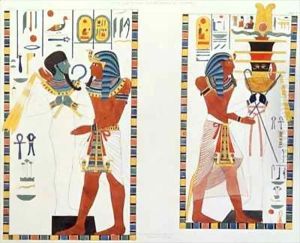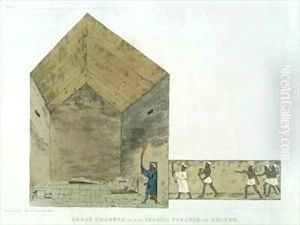Giovanni Battista Belzoni Paintings
Giovanni Battista Belzoni was a notable figure of the early 19th century, recognized not only for his contributions to Egyptology but also for his larger-than-life persona. Born on November 5, 1778, in Padua, Italy, to a barber, Belzoni initially pursued studies in hydraulics. However, his life took a series of adventurous turns, leading him eventually to become one of the most famous explorers of Egyptian antiquities.
Standing at an impressive 6 feet 7 inches tall, Belzoni was often referred to as 'The Great Belzoni'. His early career was not in archaeology, but as a strongman and showman, performing in circuses across Europe. His travels eventually took him to England, where he met his wife, Sarah Banne, who would later accompany him on many of his travels.
Belzoni's transition into the world of Egyptian archaeology began when he moved to Cairo in 1815. Initially, he intended to sell a hydraulic machine he had invented to Muhammad Ali Pasha, the ruler of Egypt, for use in irrigation. Although this venture was unsuccessful, it led to his introduction to the British Consul General in Egypt, Henry Salt. Salt recognized Belzoni's potential and hired him to collect Egyptian antiquities, marking the start of his career as an Egyptologist.
Between 1816 and 1819, Belzoni embarked on a series of expeditions in Egypt, where he made a number of significant discoveries. He is best known for his removal of the colossal bust of Ramesses II, also known as the 'Young Memnon', from Thebes to the British Museum in London. He also cleared the entrance to the temple of Ramesses II at Abu Simbel, which was buried in sand, and was the first to penetrate into the second pyramid of Giza (the Pyramid of Khafre).
Perhaps his most significant discovery was the tomb of Pharaoh Seti I in the Valley of the Kings in 1817, known as Belzoni's Tomb. He was the first to enter the tomb since antiquity, and he meticulously recorded the decorations and inscriptions within, which were later published. His work was pioneering in the field of Egyptology and significantly contributed to the understanding of ancient Egyptian culture and history.
Belzoni's methods of excavation were often criticized for their destructiveness by today's standards. However, in the context of his time, his practices were considered acceptable, and he was one of the first to document his findings in a scholarly manner. Belzoni published a narrative of his explorations in 'Narrative of the Operations and Recent Discoveries within the Pyramids, Temples, Tombs and Excavations in Egypt and Nubia' in 1820, which was a bestseller and enhanced his fame.
After his Egyptian expeditions, Belzoni continued to travel, attempting further archaeological exploits in other parts of Africa and the Middle East. Unfortunately, his adventurous life was cut short by dysentery, which he contracted in Benin, where he died on December 3, 1823. Although his career as an archaeologist was relatively short, his impact was profound, and he is remembered as one of the giants of early Egyptology.
